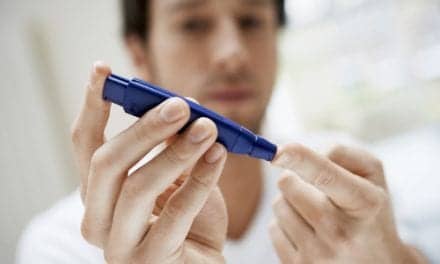ProSomnus Inc presented data at two recent conferences that it says further validate precision oral appliance therapy (OAT) for the treatment of obstructive sleep apnea (OSA).
ProSomnus presented four abstracts at the 2023 American Academy of Dental Sleep Medicine (AADSM) Annual Meeting, held May 19-21 in Philadelphia, and two abstracts at the American Thoracic Society (ATS) 2023 International Conference, held May 19-24 in Washington, DC.
According to the company, the data presented at both meetings demonstrate that ProSomnus’ precision OAT devices are:
- An efficacious first-line treatment for moderate and severe OSA, characterized by excellent adherence and patient preference relative to CPAP
- An efficacious option relative to traditional OAT devices, for all severities of OSA
- Associated with significantly fewer adverse event reports (AERs) than CPAP and hypoglossal nerve stimulation treatments
“The growing body of clinical evidence continues to show that precision oral appliance therapy is more efficacious and even safer than legacy treatment options,” says John E. Remmers, MD, chief scientist of ProSomnus, in a release. “These particular studies not only demonstrate efficaciousness but additional benefits for patients, such as better adherence and fewer adverse events.”
Data from the First Line Obstructive Sleep Apnea Treatment Study (FLOSAT) study, a clinical trial comparing the clinical effectiveness of OAT and CPAP, were presented at both meetings:
- AADSM: Comparison of Clinical Effectiveness And Patients’ Preference for Two Non-invasive Treatment Options for Patients Diagnosed with Moderate to Severe Obstructive Sleep Apnea: The FLOSAT Study; abstract 008.
- Winner of AADSM’s Clinical Excellence Award
- ATS: Oral Appliance Therapy as First-line Treatment Option in Patients Diagnosed With Moderate to Severe Obstructive Sleep Apnea; Mini Symposium A18
- Overall, patients’ apnea-hypopnea index (AHI) decreased from 22.9 events per hour to eight with OAT.
- 100% of patients adhered to OAT, while 83% of patients adhered to CPAP.
- 56.5% of patients preferred OAT, while 34.7% preferred CPAP and 8.8% expressed no preference.
In addition, key findings were also presented in the following posters at AADSM:
- OAT Device Designs Are Not the Same When It Comes to FDA Adverse Event Reports (AERs); abstract 011
- Materials: 98.5% of AERs involved OATs made from lab materials, while 1.5% involved devices made from engineered materials, such as medical-grade class VI polymers.
- Structure: 98% of AERs involved OATs with metal, elastomeric, or nylon components, while 2% involved monolithic structures.
- Titration Mechanisms: 93.8% of AERs involved OATs with anterior clasps, Herbst mechanisms, and pull mechanisms, while 6.2% involved 70-degree dorsal posts or 90-degree twin posts.
- Liners: 98.5% of AERs involved lab-formed OATs with and without liners, while 1.5% of AERs involved precision-engineered liner-less devices.
- Adverse Event Reports for Continuous Positive Airway Pressure, Hypoglossal Nerve Stimulation, and Oral Appliance Therapy Devices: an FDA MAUDE Database Analysis; abstract 012
- Winner of AADSM’s Clinical Research Award
- In 2020, there were 126 AERs for CPAP, 445 for HNS, and 24 for OAT.
- In 2021, there were 6,074 AERs for CPAP, 6,806 for HNS, and 49 for OAT.
- In 2022, there were 90,923 AERs for CPAP, 23,951 for HNS, and 40 for OAT.
- Precision vs. Traditional Oral Appliance Therapy: A Comparison of Efficacy; abstract 006
- Median efficacy for precision OAT in individuals with mild to moderate OSA was 92%, while that of traditional OAT was 75%.
- Median efficacy for precision OAT in individuals with severe OSA was 59%, while that of traditional OAT was 50%.
At ATS 2023, further data were presented in the following poster:
- Assessing Precision Oral Appliance Efficacy Using Frequency-Based and Risk-Based Indices; abstract P1181
- Precision OAT significantly reduced AHI and sleep apnea-specific hypoxic burden (SASHB)
- 91% of participants achieved efficacy when it was defined as SASHB < 53 %min/h, whereas 76% achieved efficacy when it was defined as AHI < 10 h-1.
“Precision oral appliance therapy consists of intraoral medical devices that precisely track to the healthcare provider’s treatment plan and the patient’s anatomy,” says Len Liptak, CEO of ProSomnus in a release. “This data further validates that our non-invasive, patient-preferred, precision oral appliance therapy is associated with excellent outcomes for patients with OSA.”





